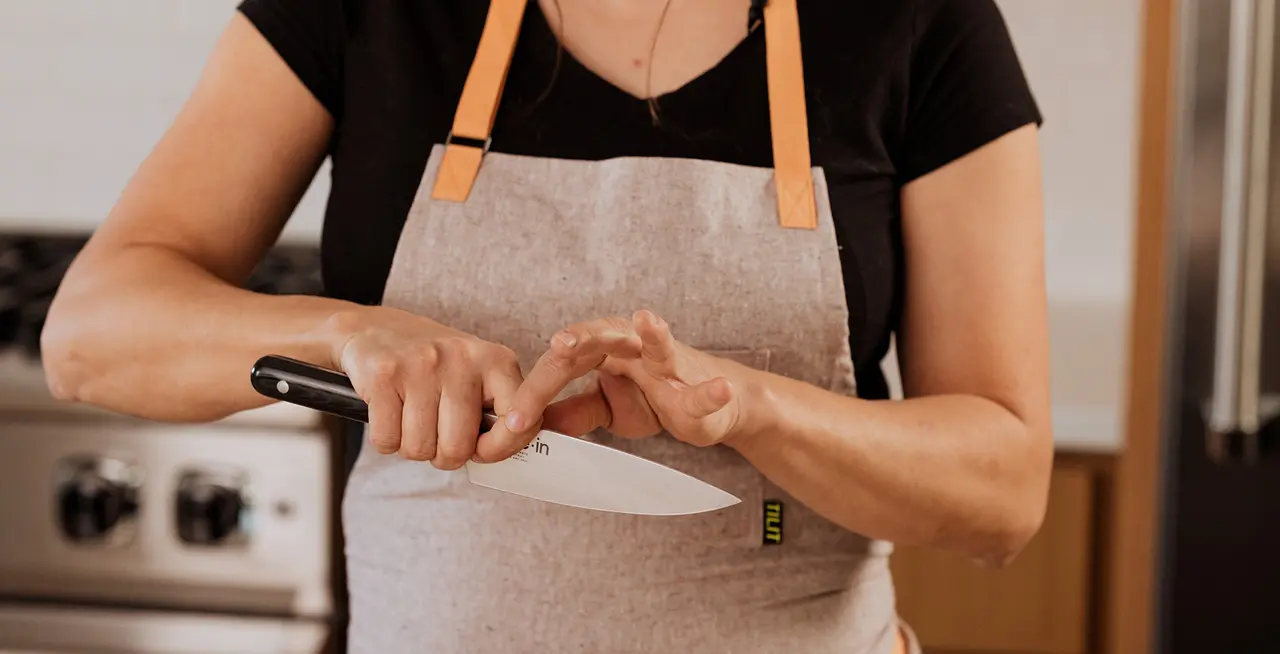How to Cut Steak with Fork and Knife: Exclusive Techniques Revealed Today
Written By James Morgan
For any barbecue enthusiast, understanding how to cut steak with a fork and knife is an essential skill that elevates the entire dining experience. Whether you're aiming to savor every bite of a perfectly cooked T-bone or ensure your guests enjoy their meal without hassle, mastering this technique is crucial.

Why Proper Steak Cutting Matters
A well-cut steak not only looks appealing but also impacts the taste. Correct cutting techniques ensure that each bite is tender, juicy, and flavorful. Moreover, proper steak cutting minimizes waste, letting you enjoy your steak to the fullest.
Learn more about cutting food with a knife to refine your skills further and handle different cuts of meat and vegetables like a pro.

Prepping for the Cutting Process
Choosing the Right Tools
The right tools make all the difference in cutting steak effectively. Investing in a high-quality steak knife and a sturdy fork is crucial. A good steak knife should be sharp enough to glide through the meat effortlessly, while the fork should provide a firm grip.
Positioning the Steak
Before you start cutting, ensure your steak is positioned correctly on the plate. This involves placing it close to the edge of the plate, making it easier to control while cutting. Ensure it's stabilized so it doesn't shift as you make each cut.

Step-by-Step Cutting Process
1. Slicing Against the Grain
One of the key elements in how to cut steak with a fork and knife is slicing against the grain. The grain refers to the direction in which the muscle fibers run. Cutting against the grain shortens these fibers, making the meat more tender.
If you're curious to learn more about how to handle a knife with precision, consider reading this handy guide on knife techniques.
2. Positioning the Knife and Fork
Hold the fork in your non-dominant hand and use it to stabilize the steak. With your dominant hand, position the knife at a 45-degree angle to the meat. Glide the knife smoothly through the steak, applying minimal pressure to avoid tearing the meat.
3. Making Clean Cuts
Ensure each cut is clean by not sawing back and forth excessively. A sharp knife is crucial for this step, allowing you to make smooth, neat slices. Keep the sizes uniform for an aesthetically pleasing presentation.

Troubleshooting Common Issues
Even the best BBQ enthusiasts sometimes encounter issues while cutting steak. Here are some common problems and how to solve them:
Problem: The Steak Is Too Tough To Cut
Solution: Ensure that your steak is cooked to the right temperature. Overcooked steak can become tough and difficult to cut.
Check out this resource on cutting vegetables with a knife to enhance your knife skills further.
Problem: The Knife Tears Through the Meat
Solution: This often happens if your knife isn't sharp enough. Regularly sharpening your knife can help in maintaining clean, precise cuts.
Maintaining Your Tools
Proper maintenance of your steak knife ensures longevity and efficiency. Regularly sharpening the blade and cleaning it after each use can make a significant difference in your cutting experience.
Sharpening Tips
Invest in a good quality knife sharpener and learn how to use it properly to keep the blade in top condition. Follow this guide for more detailed instructions on maintaining your knives.
Storage Solutions
Store your steak knife in a knife block or on a magnetic strip to protect the blade and prevent accidents. Avoid placing it in the utensil drawer, as it might get damaged or cause harm.
Creating a Memorable Dining Experience
Knowing how to cut steak with a fork and knife enhances the overall dining experience. Its not just about eating; it's about enjoying every flavorful bite, appreciating the texture, and sharing the joy with loved ones.
For an extended understanding of maintaining your tools and adopting advanced cutting techniques, consider reading this detailed article.
FAQ
1. What type of knife is best for cutting steak?
A high-quality, sharp steak knife is essential for cutting steak effectively. Serrated or non-serrated blades can both work, depending on your personal preference.
2. Why should I cut against the grain?
Cutting against the grain breaks down the muscle fibers, making the meat more tender and easier to chew.
3. How often should I sharpen my steak knife?
Regularly sharpen your steak knife every few months, depending on how often you use it. Frequent use may require more frequent sharpening.
If you want to learn more about treating minor cuts in the kitchen, visit Verywell Health for expert advice.
As an Amazon Associate, I earn from qualifying purchases.



